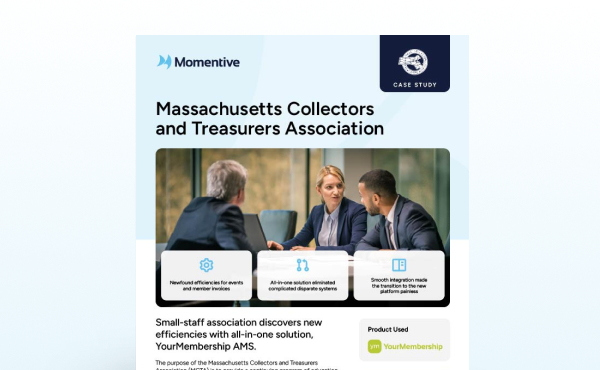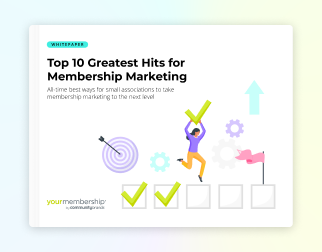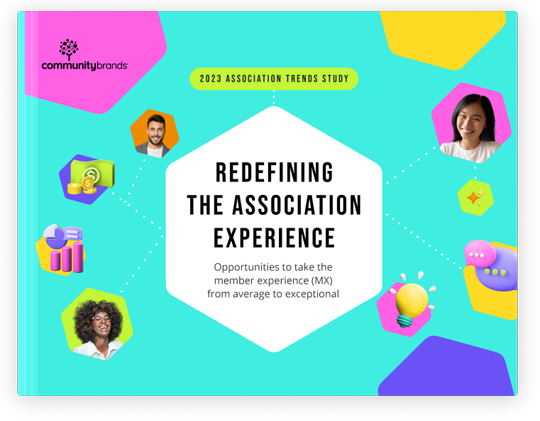This is the second of a two-part series from Real Magnet looking at best practices for re-engaging your association members. For a refresher, read part 1 here.
In March, we shared the first three basic best practices for re-engaging your association members. Now, here’s the other three.
Remember, as an email marketer, your list of both members and prospective members is probably your most valuable asset. Likewise, the potential of shrinking your list places you in danger of losing revenue, members or donations.
But, everywhere you turn, industry experts tell you to cull your list of old, inactive, non-engaged recipients to improve deliverability. How can you reconcile these suggestions with your need for the largest possible audience?
Read on to learn how.
4. Prioritize the call to action.
Any re-engagement message should be designed to inform members they need to act and give them the means to do so. Don’t just send the same content they’ve been ignoring with a different subject line. Ideally, this message body should contain only one or two links. We recommend having one link for those who want to confirm their desire to stay on the list, and one for those who wish to unsubscribe immediately.
It’s also a good idea to allow recipients to change their email address, message frequency or content preferences when they confirm. This gives the member the opportunity to engage with your mailings on their terms. This is usually accomplished through a Subscription Management or Preference page. Just be sure to use this option in addition to the one-click confirm, not in place of it.
5. Keep it going.
Re-engagement should be an ongoing process, not a one-time thing. Regularly targeting less active recipients with more engaging content or special offers can keep them engaged and minimize the portion of your list which falls off due to inactivity.
For example, if you have a rule stating members who haven’t opened their past 50 emails are considered inactive, start trying to re-engage recipients who haven’t opened 35 or 40 messages. Automating this process will help to stay on top of user engagement and minimize the manual labor involved to keep it running.
6. Set realistic expectations.
If you have never run a re-engagement campaign (or it’s been more than a couple of years), you may not see the response rates you’d hoped. A 2014 study indicated open rates for re-engagement campaigns averaged around 12%, a couple percentage points lower than most marketing messages. Of course, these are only averages. But, it’s good to keep in mind you’re not likely to see half or more of your inactive contacts re-engage based on these campaigns.
Occasionally, you may be given a suggestion to “rest” your inactive members, removing them from your active mailing list for a cooling-off period. This tactic can be beneficial, but we recommend using it in conjunction with a re-engagement campaign, not as a replacement. There are two major scenarios for cooling-off periods:
- If you send frequently (more than two mailings per week): Recipients who receive daily or near-daily messages can quickly become burned out. It may be beneficial to remove those members from the heaviest rotation for a few mailings or move them to a less-frequent schedule, if this aligns with their preferences as expressed via your Subscription Management page. Once the move has been made, these recipients should be targeted with messages designed to increase engagement.
- If you send two mailings per month or less: Infrequent senders typically see less value from this tactic. Those who receive only one to two messages per month are not likely to experience the same type of burnout. If you do choose to rest these members, we recommend going no longer than 90 days between mailings, in addition to tailoring content to encourage engagement.
We know it’s hard to say goodbye.
Once you’ve followed (and tweaked) these best practices, the time will come when the cost of keeping inactive recipients around outweighs the benefits of having them in your database. In addition to the ISP filtering previously mentioned, unengaged contacts are also exponentially more likely to file spam complaints (which hurt your delivery rates) or even be converted into spam traps (which hurt your delivery rates even more).
The time for this “final goodbye” will vary by organization and audience. As a rule, though, any recipient who hasn’t opened an email in more than one year and fails to act on your re-engagement campaign should be targeted for suppression.
When removing contacts from your list, you should always suppress them from receiving mailings instead of simply deleting them. This not only prevents any accidental reloading of the contacts, but, more importantly, allows you to reverse the suppression if you receive a request from a recipient. If you delete the record, all historical data associated with the email address is typically lost.
Finally, once you have suppressed these users, keep them suppressed. Often senders make the ill-advised decision to give suppressed recipients “one more shot,” sometimes months or even years after they are suppressed. Sending mail to previously suppressed contacts introduces an even higher risk for complaints, spam traps and invalid addresses, all of which can lead to irreparable harm to your sending reputation.
Final takeaway.
We can all acknowledge cutting a significant portion of your list can be painful. But, it also allows you to spend your time and email budget on contacts who want to engage with your organization. A re-engagement campaign helps to ensure your members have plenty of chances to get involved, and you are only suppressing truly unengaged recipients.






